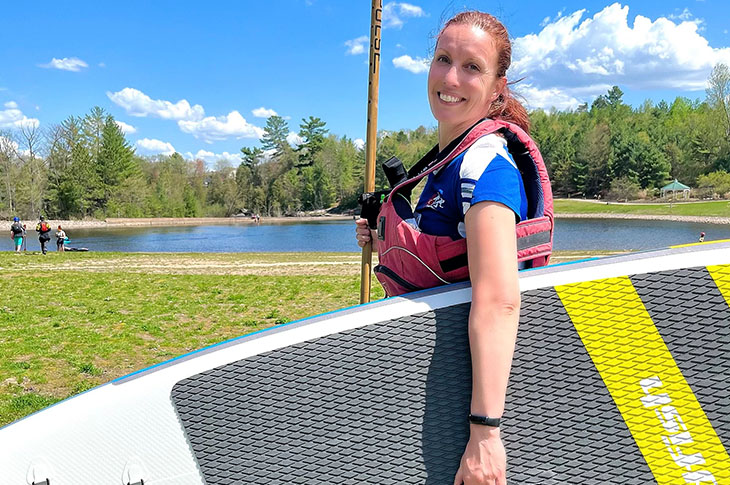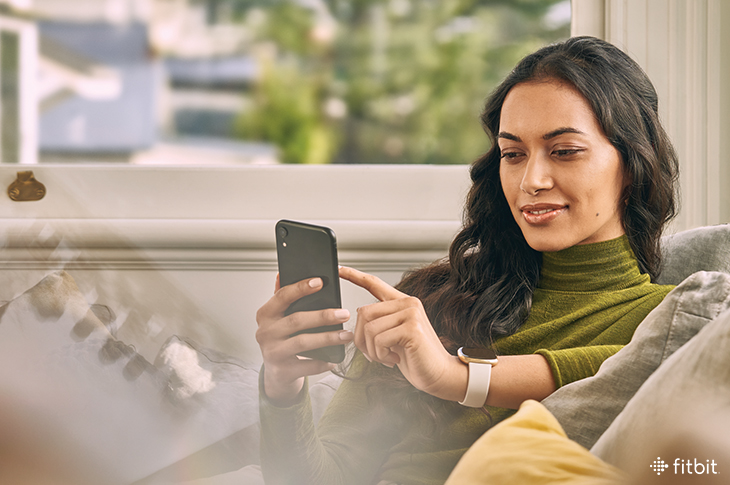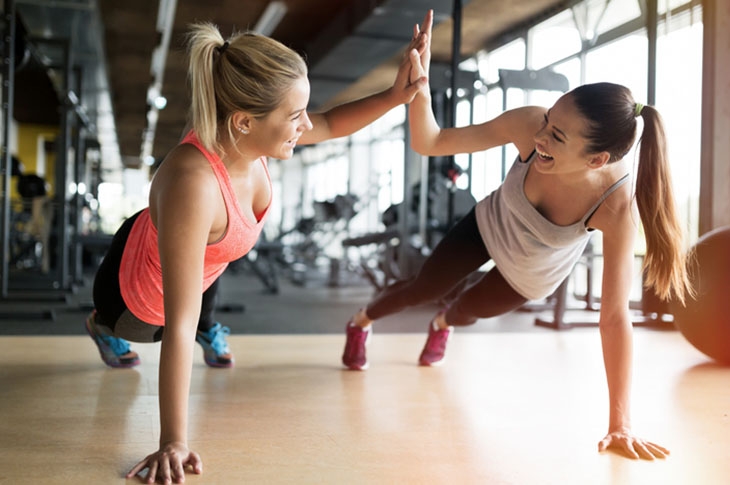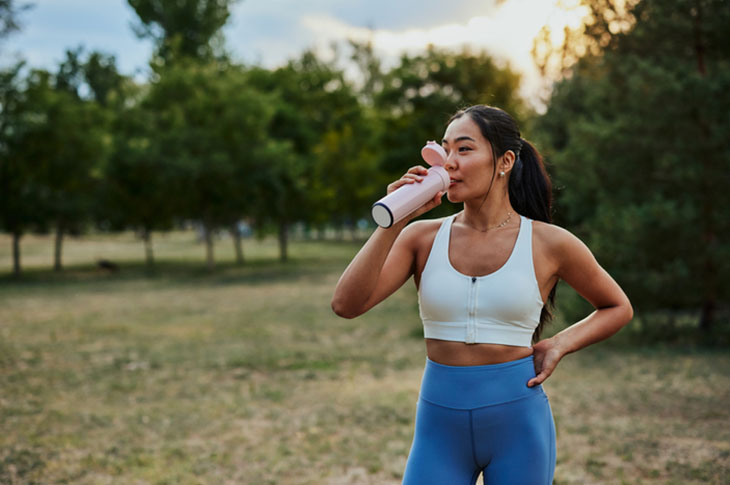Most of us experience a stiff neck from time to time—but that doesn’t make it any more pleasant (or less painful) to deal with. Luckily, there are steps you can take to alleviate the symptoms of a stiff neck and feel more loose, relaxed, and comfortable.
Let’s take a look at six strategies you can use to get rid of your stiff neck.
What causes a stiff neck?
Before we jump into tips to alleviate the symptoms of stiff neck, let’s quickly touch on some of the reasons why your neck might be feeling stiff—starting with posture.
“It’s no secret that most of us spend a good portion of our day looking at a phone and/or a computer screen,” says doctor of physical therapy and yoga instructor Kristina Kehoe. And all that time staring at a screen can lead to posture issues.
“Typically, we sit with what’s called ‘forward head posture,’ where the shoulders are rounded forward and the head is held forward, where the ears are lining up in front of the shoulder,” continues Kehoe. “This causes the muscles in the back of the neck and back to work harder to hold our head and neck up”—which can lead to a stiff neck.
Another culprit that may be playing into your neck stiffness? Too much stress.
“[When we’re stressed], we tend to hold a lot of tension in our shoulders or neck,” says Kehoe. “If you’re tensing your shoulders and surrounding muscles all day, these muscles can get tense and stiff.”
Not moving enough throughout the day—or staying in one position for too long (for example, sitting at a desk or sleeping in an uncomfortable position)—can also cause neck stiffness.
“The biggest cause of stiff neck is lack of movement,” says Tony Matoska, doctor of physical therapy and clinic manager for Athletico Physical Therapy in Muskego, WI. “Many people find themselves sitting in one place too long throughout the day, which causes joints to stiffen and muscles to tighten.”
Clearly, there are a lot of factors that could be causing symptoms of a stiff neck. But the question is, how do you alleviate those symptoms?
Do neck exercises…
One of the best ways to alleviate neck stiffness? Doing exercises and stretches that target the neck. Some exercises you may want to incorporate into your daily routine to alleviate the symptoms of a stiff neck include:
Chin tuck. The chin tuck exercise “will help improve posture throughout the day to avoid the forward head posture,” says Kehoe—and the stiff neck that can often come with it.
“To perform a chin tuck, you want to sit with a neutral posture—so shoulders in line with your hips and ears aligned with your shoulders,” says Kehoe. “Draw your chin back while keeping your jaw and shoulders relaxed.”
For best results, Kehoe recommends repeating the chin tuck between 10 and 20 times in a single session—and cycling through between 5 and 10 sessions throughout the day.
Upper trap stretches. The upper trap muscles are located on both sides of your neck—and “these are the muscles that get especially tight with stress since they’re the muscles we use to raise our shoulders towards our ears,” says Kehoe. “This stretch will help to decrease tension in these large muscles and can be very effective when stress is a main culprit of your neck stiffness.”
To stretch your upper trap muscles, “draw the right ear towards the right shoulder to feel a stretch on the left side of the neck,” says Kehoe. “If it’s tolerable, gently pull down on the side of the head towards the right [shoulder] to feel a deeper stretch.”
Hold the stretch for 20 to 30 seconds; then, repeat on the left side.
Levator Scapulae Stretch. Another muscle to target if you want to loosen up your neck? The levator scapulae.
“The levator scapulae is a muscle to the side and back of the neck,” says Kehoe. “In my experience, a lot of knots live in this muscle when the neck is stiff. Stretching this area out can help with overall mobility and stiffness of the neck.”
For this stretch, “start by bringing the right ear to the right shoulder,” says Kehoe. “After you’ve achieved that position, slowly turn your head towards your right armpit. You should feel a stretch on the left side of the neck—but more in the back of the neck when compared to the upper trap stretch.”
Hold the stretch for between 20 and 30 seconds, then switch to the left side. Repeat the process two to three times per side.
…and yoga poses
Yoga can also be a great way to alleviate neck stiffness. Some yoga poses that are especially helpful for stiff neck include:
Standing Forward Fold. Standing forward fold is a foundational yoga pose that’s also great for the neck as it “allows gravity to help decrease stress on the spine in the neck and open up the joint space in the neck,” says Kehoe.
To get into the pose, “stand with your feet hip width apart. Slowly roll your spine down to bring your hands towards the floor,” says Kehoe. “Keep a slight bend in your knees to avoid putting excess strain on your back.”
You can either keep your fingertips on the floor or cradle your elbows in opposite hands. From there, “Allow your head to hang heavy toward the floor,” says Kehoe. “You can gently sway side to side or nod the head yes/ no if that feels comfortable.”
Remain in the posture for 5 to 8 breaths.
Thread the needle. This posture “helps open up the upper back and neck and relieves tension,” says Kehoe.
To thread the needle, “start on all fours,” says Kehoe. “Reach the right arm through the left arm, coming down onto the right shoulder if that feels comfortable.”
Hold here for 3-5 breaths, then repeat with the left arm.
Supported fish pose. This yoga pose “helps to improve the mobility through your thoracic spine…[which is important because] when this area is not moving well, the neck can compensate and feel stiff,” says Jackie Fenton, doctor of physical therapy, yoga instructor, and owner of Bright Heart Yoga Studio.
To get into the posture, place a pillow, block, or foam roller between your shoulder blades and perpendicular to your spine. With your knees bent and feet flat on the floor, lean back against the pillow, block, or foam roller and put your hands behind your head, allowing your chest to open. Stay in the posture for 10 breaths.
Adjust your workstation
As mentioned, spending all day sitting at a desk can play a major role in neck stiffness. So, if you want your neck to feel less stiff, creating a more ergonomic workstation is a great step.
There are a variety of ways to update your workstation to be more neck-friendly, including:
Put your monitor at eye level. “If you’re spending the day looking up or down at a monitor, you will inevitably have stiff muscles because those are not positions that are great for our head, neck, or shoulders,” says Kehoe. “Keeping the monitor at a point where it’s level with your gaze allows you to maintain good posture throughout the day.”
Adjust your desk and chair to ensure your feet are resting flat on the floor. “Make sure your desk height clears the knees and thighs,” says Matoska. “If your chair is too tall, use a footrest to ensure your feet are resting flat.”
Use a headset for phone calls. Holding your phone between your neck and shoulders is a surefire way to develop a stiff neck—so “use a headset and/or place a speaker close for calls to avoid cradling the phone between your shoulder and neck,” says Matoska.
Get a massage
Another great (and relaxing!) way to find relief from a stick neck? Booking a massage.
“Massage can definitely help a stiff neck…whether the neck stiffness is more acute or chronic,” says Kehoe. “Massage can help promote blood flow to tense muscles and improve muscle relaxation to help decrease pain.”
Let your massage therapist know you’re experiencing a stiff neck—and as they’re working, let them know if the pressure feels too intense or you find yourself tensing up.
For added benefit, ask your massage therapist to show some TLC to the areas surrounding your neck. “The upper traps and areas around the shoulder blades are common areas that get tight and sore with neck pain and are great to address during a massage,” says Matoska.
Invest in a new pillow
Do you find your neck is most stiff in the morning? “If you’re finding that you continually wake up with a stiff neck—and it improves over the day—it’s possible that your pillow may be a culprit,” says Kehoe.
If you’re using a soft, fluffy pillow, it may be time to switch things up. Kehoe recommends memory foam pillows that are contoured to allow the neck to stay in a comfortable, supported position throughout the night—as opposed to soft pillows, which don’t offer as much support and could be a contributing factor to stiff neck.
Try foam rolling
Foam rollers are great tools for workout recovery—and, as it turns out, they’re also great tools for dealing with neck stiffness.
To help alleviate symptoms of neck stiffness, you don’t want to actually foam roll on your next; instead, focus on your back.
“Rolling up and down the middle of your back (thoracic spine) is helpful for relaxing tight muscles and moving stiff joints,” says Matoska. “Working on extending your mid back backwards over the foam roller at different levels that feel stiff is also extremely beneficial.”
And if things sound a bit…crunchy during the process? Not to worry. “It is very common to feel pops and cracks as you foam roll, which are signs of pressure relief from stiff joints,” says Matoska.
The post Stiff Neck? Try These 6 Tips to Alleviate the Symptoms appeared first on Fitbit Blog.










